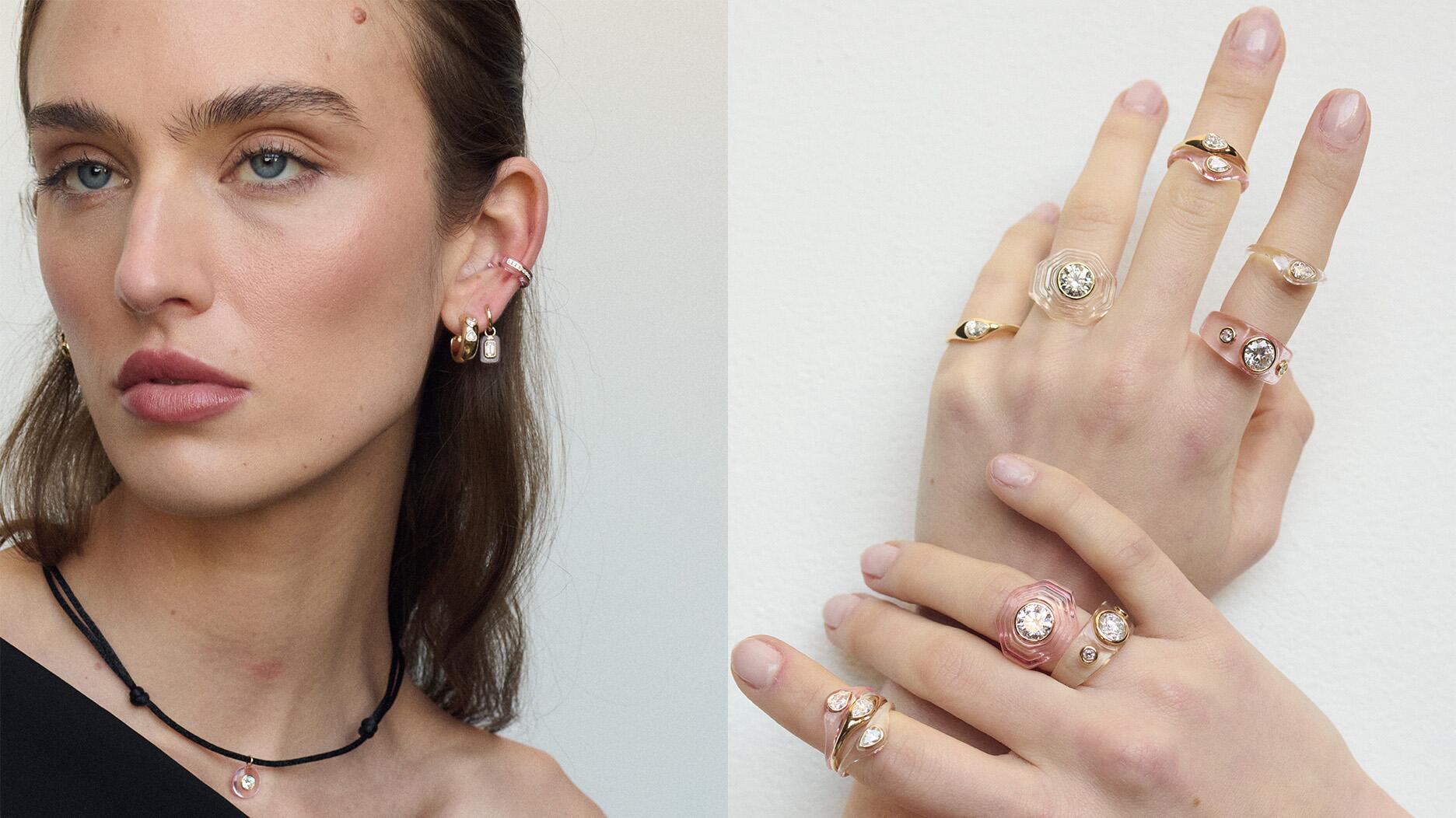GIA Reverting to More General Terminology for Lab-Grown Diamonds
It will quit assigning the stones specific color and clarity grades in favor of applying “new descriptive terminology.”

This time, the lab is going right back to where it started from, sort of.
On Monday, GIA announced that beginning later this year, it will quit using the color and clarity nomenclature it developed for natural diamonds in evaluating lab-grown diamonds.
Instead, the lab will, first, confirm that the submitted stone is a laboratory-grown diamond and then evaluate its color, clarity, and finish to determine if it falls into one of two categories: “premium” or “standard.”
If the lab-grown diamond fails to meet the minimum standard for quality, it will not receive a designation from GIA.
The lab said it is making the change in response to the dramatic compression in the range of color and clarity seen in lab-grown diamonds, a change that has come about as a result of continual improvements in diamond-growing technology in recent years.
It also noted that this revision will “help consumers understand the important differences in the two products’ origin, ensuring their confidence and enabling them to make informed and educated purchase decisions.”
GIA said that since 2022, 95 percent of the man-made diamonds submitted to the lab for grading have been colorless, meaning they would receive a grade of D, E, or F, while 98 percent received a clarity grade of VS1 or higher.
Executive Vice President and Chief Laboratory and Research Officer Tom Moses remarked, “Similar to other man-made gem materials, we anticipate the continued acceptance and popularity of laboratory-grown diamonds.
“More than 95 percent of laboratory-grown diamonds entering the market fall into a very narrow range of color and clarity. Because of that, it is no longer relevant for GIA to describe man-made diamonds using the nomenclature created for the continuum of color and clarity of natural diamonds.”
Moses’ remarks echo those he made in a 2016 interview with National Jeweler in which he explained the rationale behind GIA’s approach to grading lab-grown diamonds.
At that time, GIA used broader terms to describe lab-grown diamonds, calling stones in the D-F range “colorless” and those in the G-I range “near colorless,” and using only four clarity grades for the stones, VVS, VS, SI or I, compared with 11 for natural diamonds.
Moses said at the time that GIA chose to do it this way because lab-grown diamonds just aren’t going to have the same color and clarity range as mined diamonds.
To GIA, it didn’t make sense to apply its grading system—which Moses noted was developed for “normal mine run” in the 1940s, long before lab-grown diamonds were hitting the market in the quantities they are today—to man-made diamonds.
GIA first began accepting lab-grown diamonds for grading in 2006.
It announced the first shift in how it approaches the stones after the Federal Trade Commission rolled out its revised Jewelry Guides in 2018. Among the revisions was the removal of the word “synthetic” from the list of recommended terms for referring to lab-grown diamonds.
In light of this update, the lab announced in April 2019 that it would be changing the name of what was then called the GIA Synthetic Diamond Grading Report to the GIA Laboratory-Grown Diamond Report.
It also started including the standard color, clarity and cut grading scales on the reports, but for reference purposes only; the lab did not start grading lab-grown diamonds the same way it did natural stones.
A little more than a year later, that changed.
In August 2020, GIA announced that it would start using the same specific color and clarity grades for both natural and lab-grown diamonds, citing the “growing acceptance in the trade and by consumers of laboratory-grown diamonds as a distinct category.”
Now, nearly five years since that announcement, GIA is pivoting yet again.
This time, the lab is arguably using even broader terminology than it did when it first started accepting lab-grown diamonds for grading nearly 20 years ago.
It is going from using the terms “colorless” or “near colorless” and a limited range of clarity grades to evaluating both qualities together, along with finish, to determine if man-made stones are “premium” or “standard.”
GIA said it is still developing pricing and submission guidelines for its new lab-grown diamond grading service.
It expects to announce more specifics in the third quarter. In the meantime, existing GIA reports for lab-grown diamonds remain valid.
The release does not mention if the reports, or whatever is forthcoming with this new service, will have a different name.
It also does not mention if there will be any changes to the way GIA applies the other two Cs to lab-grown diamonds—carat weight and cut, which is a factor introduced during the manufacturing process and thereby can exist on a broad continuum for both natural and lab-grown diamonds.
GIA said its current services for lab-grown diamonds will continue to be available until the revised descriptive system for lab-grown diamonds is finalized later this year.
The Latest

Linda Coutu is rejoining the precious metals provider as its director of sales.

The Signet Jewelers-owned store, which turned 100 last year, calls its new concept stores “The Edit.”

The supplier has a curated list of must-have tools for jewelers doing in-house custom work this year.

How Jewelers of America’s 20 Under 40 are leading to ensure a brighter future for the jewelry industry.

Footage of a fight breaking out in the NYC Diamond District was viewed millions of times on Instagram and Facebook.


The governing board welcomed two new members, Claire Scragg and Susan Eisen.

Sparkle with festive diamond jewelry as we celebrate the beginning of 2026.

Roseco’s 704-page catalog showcases new lab-grown diamonds, findings, tools & more—available in print or interactive digital editions.

The master jeweler, Olympian, former senator, and Korean War veteran founded the brand Nighthorse Jewelry.

In its annual report, Pinterest noted an increase in searches for brooches, heirloom jewelry, and ‘80s luxury.

Executive Chairman Richard Baker will take over the role as rumors swirl that a bankruptcy filing is imminent for the troubled retailer.

Mohr had just retired in June after more than two decades as Couture’s retailer liaison.

Shekhar Shah of Real Gems Inc. will serve as president of the Indian Diamond & Colorstone Association in 2026.

This year’s good luck charm features the mythical horse Pegasus, and is our first Piece of the Week of the new year.

Articles about crime, engagement rings, and a necklace worn in the World Series generated the most interest among readers.

As part of the leadership transition, Sherry Smith will take on the role of vice president of coaching strategy and development.

It marks the third time the country has headed the Kimberley Process. Ghana will serve as vice chair.

The new Bulova x Stetson designs highlight two animals often associated with the American West—the bison and the Texas Longhorn.

Its residency at Yamron Jewelers will run through May 2026.

From influential executives to innovative designers, we pay tribute to the people we said goodbye to this year.

The retailer is expanding into areas with large Indian and South Asian populations.

The Italian brand has opened its first flagship amid the peaks of the Dolomites in Madonna di Campiglio, Italy.

The new curation at the Natural History Museum of Los Angeles County showcases rare gem and mineral specimens in their uncut, natural state.

The couple pleaded guilty to concealing at least $127 million in cash transactions at its precious metals businesses.

Consumers shared concerns about prices, inflation, tariffs, trade, and politics in the survey’s write-in response section.

In February 2026, the auction house will move its headquarters to the former Steinway Hall, a neoclassical landmark on Billionaires’ Row.

The new show will take place Jan. 23-25, 2026.




























